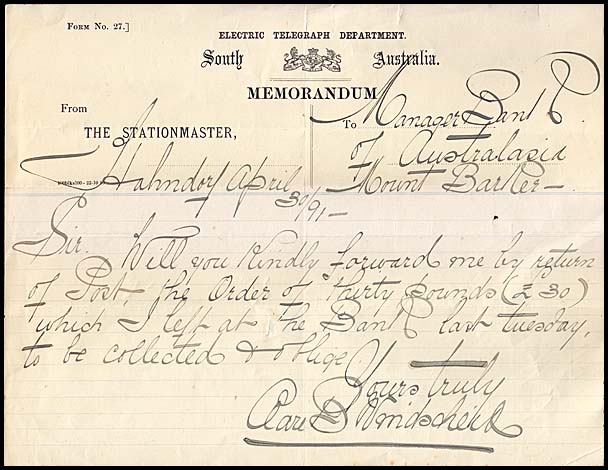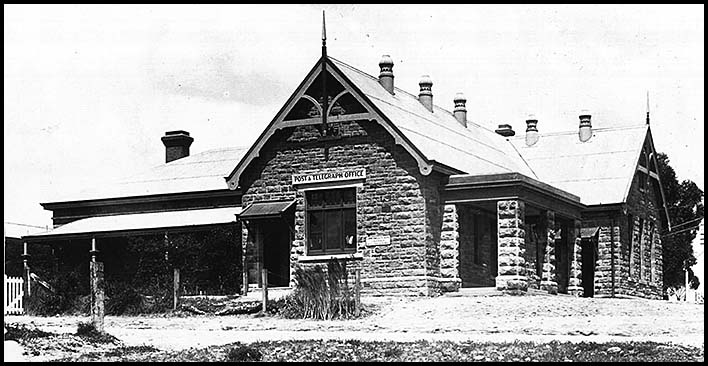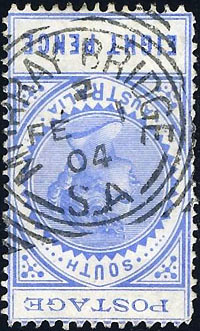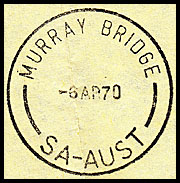The lines to the East.
- Site home & details
- Australia 1901-1988
- New South Wales
- Queensland
- South Australia
- Tasmania
- Victoria
- Western Australia
- International
- Special aspects
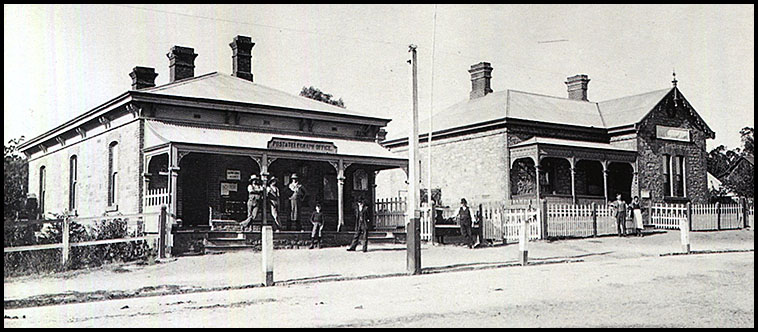 Birdwood Post & Telegraph Office about 1910. |
|
The Telegraph Office opened in ?? 1879. In September 1878, " there was a prospect of our long-talked of telegraph line being commenced. It has been pegged and surveyed and tenders called for its construction". |
|
The Telegraph Office at Echunga was opened on 10 July 1873. Prior to that, there had been a number of petitions presented urging the opening of an office - especially as the line went past Echunga by that stage. |
|
| Hahndorf.
The Telegraph Office opened in 1864. Also see Mount Barker below. |
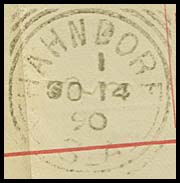 Hahndorf 14 October 1890. Squared circle postal datestamp. |
Langhorne's Bridge. The Telegraph Office opened at Langhorne's Bridge on 5 October 1866. Changed name to Langhorne's Creek in |
|
A Telegraph line was connected in 1866. Two years previously, Public Meetings had been held and the need for a Post & Telegraph Office was raised. For example, in November 1864, the meeting expressed the " hope that the Government will grant us the boon of a telegraph office, which will be much required this year, as a good deal of wheat will be purchased here." |
|
| When the line was completed to Macclesfield, the Post Office and Telegraph Office were located in a private store. There was considerable and long-standing dissatisfaction with this arrangement. For example, in October 1881, a deputation met with the Minister of Education and "asked that a Post and Telegraph might be erected at Macclesfield. They represented that the postal and telegraph business at present was conducted in a private store and that there was almost universal complaint against the manner in which it was carried on. Persons were kept waiting for their letters in some cases more than quarter of an hour whilst the Postmaster was attending to private business in connection with the store and those receiving invoices from rival storekeepers were frequently insulted. There was not the privacy observed which was desirable in connection with the Telegraph Office and it occasionally happened that a person having letters at the office was,after applying, kept waiting for them for four or five days. But on public grounds alone the deputation thought they had a perfect right to an independent Post and Telegraph Office. It was pointed out that Macclesfield had 200 assessed properties and from its present and prospectively largely increased importance, in view of extended railway and telegraphic communication, it would have a good deal of postal and telegraph business to do. They disclaimed any personal animosity to the Postmaster. Mr. C. Todd, C.M.G., at the request of the Minister, said he had no idea that such a state of things existed at Macclesfield and regretted that his attention had not been called to specific cases at the time they happened. The postal and telegraph business had been connected with a store some years ago from motives of economy as the place was not large enough to justify a separate office but, where possible and justifiable, his experience had taught him that it was very undesirable to have the postal duties transacted by a storekeeper. Under such circumstances, the Postmaster was frequently subjected to unjust suspicions and the public inconvenienced as the Postmaster at Macclesfield received from £70 to £75 a year the Government could employ a lady to take charge of an independent without much extra expense. Mr. H. Conigrave pointed out that the Government had a good site available. The Minister of Education, in reply, said he was very sorry to hear of such a condition of affairs in connection with the office at Macclesfield. The postal and telegraph business should always take precedence of the storekeeper's own. There could be so doubt< that it was undesirable that Post-Offices should be in stores and, whenever it was possible, it was the policy of the Government to have the business carried out in a separate office. Unquestionably Macclesfield was of sufficient importance to be placed on the same footing in these respects as other smaller towns. The only difficulty was the time at which the delegation had brought the matter before him, as the Estimates had been passed, and the Supplementary Estimates made up. It would, therefore, be impossible for anything to be done in the matter of erecting new this year. He would look into the matter to see if anything could be done. The Postmaster-General should enquire into the complaints offsetting the business in the meantime, and, if necessary, make some other arrangements. The deputation had made out a thoroughly satisfactory case and, on public grounds alone, they would be justified in preferring their request and he would promise that next year at least provision, should be made". In December 1883, a tender to construct a new Post & Telegraph Offices was let to T. Burnett for £695 2s 6d. |
|
|
The Telegraph Office was opened on 29 June 1860 by Mr. Charles Todd. The site had been a great point of contention. The new Telegraph Office was completed about 18 August. On 1 November 1860, a young messenger - Mr. Waddy - was appointed to the new office after having passed his oral and public examinations. |
|||
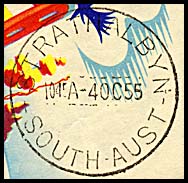 |
Strathalbyn. 4 October 1955. Used on Congratulations form |
||
|
The Telegraph Office opened in 1863. |

